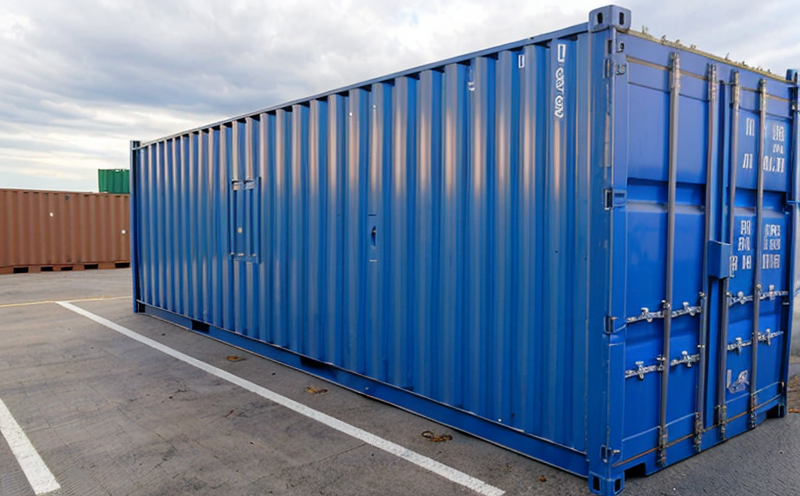DIN 53363 Tear Resistance Testing of Plastic Storage Plastics
The DIN 53363 standard is a widely recognized method for evaluating the tear resistance properties of plastic storage containers. This test assesses how well materials withstand tearing or splitting under stress, which is critical for ensuring the structural integrity and durability of packaging used in various industries such as food, pharmaceuticals, and consumer goods.
The primary focus of this testing is to determine if a material will hold together when subjected to forces that could cause it to tear. This is particularly important for plastic storage containers where consistent performance under stress can mean the difference between product protection and failure. The test simulates real-world conditions by applying defined tensile forces across a controlled specimen, measuring the amount of force required before tearing occurs.
Specimens are typically cut from the material to be tested using standardized procedures outlined in DIN 53363. These specimens undergo testing on specialized equipment designed to apply precise and consistent tension until failure. The results provide valuable insights into the tear resistance characteristics, helping manufacturers optimize their product designs for better performance.
For plastics used in storage applications, it is crucial to ensure that containers can withstand environmental stresses without compromising their integrity. This test ensures compliance with industry standards while also providing data that helps improve product design and quality. By using this method, companies can enhance the reliability of their packaging solutions and gain a competitive edge in the market.
The DIN 53363 standard is applicable to a wide range of thermoplastics and elastomers commonly used in storage containers. It allows for testing various types of plastic films, sheets, and molded parts that are subjected to mechanical stress during use or handling. The test helps identify potential weaknesses in material design early on, allowing for necessary adjustments before large-scale production.
Understanding the tear resistance properties of plastics is essential for industries relying heavily on packaging integrity. This includes food manufacturers who need to ensure their products remain protected from external contaminants throughout storage and distribution. Similarly, pharmaceutical companies must guarantee that their containers can maintain product quality during transport and shelf life. Properly conducted DIN 53363 tests contribute significantly to achieving these goals by providing reliable data about material performance.
In summary, the DIN 53363 standard plays a vital role in ensuring the reliability and longevity of plastic storage containers across multiple sectors. Its application ensures that materials used meet stringent requirements set forth by international standards organizations like ISO and ASTM. As technology advances, so too does our understanding of how best to evaluate tear resistance; however, principles outlined within DIN 53363 remain relevant today.
Applied Standards
| Standard Number | Title of Standard | Description |
|---|---|---|
| DIN 53363 | Tear Resistance Test for Plastic Materials | This standard specifies the procedure for determining tear resistance in plastic materials by means of a strip test. It applies to all types of thermoplastic films, sheets, and molded parts. |
| ISO 178-5:2021 | Plastics — Mechanical testing — Part 5: Tensile testing | This international standard provides guidance on the mechanical testing of plastic materials using tensile testing methods, including those applicable for DIN 53363. |
| Standard Number | Title of Standard | Description |
|---|---|---|
| ASTM D1922-18 | Standard Test Method for Tear Propensity of Flexible Polymeric Packages | This American Society for Testing and Materials (ASTM) standard complements DIN 53363 by offering additional metrics related to tear propensity, which can be particularly useful when evaluating flexible packaging. |
| EN 14821:2019 | Thermoplastics and thermoplastic elastomers — Determination of tensile properties | This European standard aligns closely with DIN 53363, providing further consistency across different regions. |
Why Choose This Test?
Selecting the appropriate testing methodology is crucial for ensuring accurate evaluation of tear resistance in plastic storage containers. The DIN 53363 standard offers several advantages over other available options:
- Specificity to Plastic Materials: Designed specifically for thermoplastics and elastomers, this test provides precise results relevant only to these types of materials.
- Standardization: By adhering to internationally recognized standards like DIN 53363, companies can ensure their testing processes are consistent with global best practices.
- Precision: The controlled environment and standardized procedures used in this test allow for highly accurate measurements of tear resistance.
- Compliance Assurance: Meeting the requirements set forth by DIN 53363 helps manufacturers comply with regulatory expectations, enhancing their reputation and market position.
Incorporating DIN 53363 into your quality assurance process ensures that you are using a tried-and-true method validated by numerous industries. This enhances trust in your products while reducing the risk of unforeseen failures during use or transport.
Environmental and Sustainability Contributions
- Eco-friendly Packaging: By ensuring that plastic storage containers have adequate tear resistance, this test supports the development of sustainable packaging solutions. Strong materials reduce the likelihood of tears leading to leaks or breaches, preserving product integrity while minimizing waste.
- Resource Efficiency: Properly designed and tested containers contribute to efficient resource use by extending their useful life span without compromising safety or functionality.
- Reduction in Waste: Enhanced durability from optimized tear resistance leads to less frequent replacements, ultimately reducing the amount of plastic waste generated over time.
- Innovation Driving Change: Continuous improvement through rigorous testing like DIN 53363 encourages innovation aimed at creating more sustainable packaging options that meet both performance and environmental goals.
The commitment to sustainability extends beyond just reducing the impact of individual products; it involves fostering an overall culture of responsibility within manufacturing processes. Testing methods such as DIN 53363 play a key role in driving this shift towards greener practices across various sectors.





